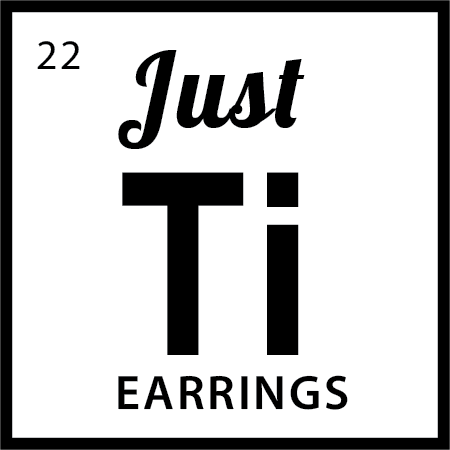Is Titanium "non allergic"?
Share
What Allergies are bothering you?
Metal allergies manifest differently across genders, but the frustration is universal. For women, who experience metal allergies at a 5.2-to-1 ratio compared to men, symptoms typically appear around jewelry contact points - especially earlobes, wrists, and necklines. We often see redness, itching, and bumps that develop 12-72 hours after exposure and can last 2-4 weeks.
Men more commonly experience reactions through occupational exposure or belt buckles and watches, but when it comes to ear piercings, the sensitivity patterns are remarkably similar. The symptoms start on sensitive ears as localized contact dermatitis but can progress to more severe reactions including blistering and systemic symptoms like headaches and fatigue in sensitive individuals.
First-order reactions include immediate redness and irritation, while delayed reactions can surprise us days later with persistent rashes that seem to appear out of nowhere. Understanding these patterns helps us recognize when our jewelry might be the culprit.

The Nickel (and friends) Allergy Problem
Nickel has become the villain of the jewelry world because it's simply too useful to ignore. This silvery metal is strong, malleable, and cost-effective, making it the go-to choice for manufacturers looking to create affordable costume earrings. It provides that coveted shine and strength that makes jewelry both beautiful and long-lasting. Nickel can also be found in earrings that have been gold plated, which can cause problems in especially sensitive ears or when the gold plating wears off. Nickel is found stainless steel and many other alloys used in earring production. While 925 sterling silver earrings are less likely to have nickel, it is impossible to call them "nickel free earrings" for sure; 925 means the earrings are 92.5% silver and 7.5% other metals (often copper, sometimes metals sensitive ears don't like).
But here's what makes nickel particularly problematic: once we develop sensitivity, it's permanent. Our immune systems don't forget, and sensitivity can actually increase over time with continued exposure. What starts as mild irritation can evolve into severe reactions that require complete avoidance.
The exposure timeline varies dramatically - some of us develop sensitivity after our first piercing, while others may wear nickel-containing jewelry for years before reactions begin. Moisture and sweat accelerate the process, which is why earrings (constantly exposed to natural oils and sweat) are such common triggers.
Missing Standards and Certifications
The regulatory gap that leaves us vulnerable
In North America, there are no federal standards governing nickel content in jewelry. While the European Union has strict regulations limiting nickel release to specific levels, Canadian and American consumers navigate a largely unregulated market where manufacturers can make claims without substantiation.
The lack of national recognition means we're left to become our own advocates. Unlike food allergens, which have clear labeling requirements, metal allergies receive minimal regulatory attention despite over 18% of North Americans who have sensitive skin. This is what makes it impossible to know the metal material percentages of sterling silver, stainless steel, surgical steel, and similar alloys. This also creates a marketplace where "hypoallergenic" claims vary wildly between manufacturers, leaving us to decipher marketing language rather than relying on standardized protections.
Without mandatory testing or certification processes, we must rely on our own research and trusted brands that voluntarily adhere to higher standards.

4. Are Hypoallergenic earrings 'non allergic' earrings?
The term "hypoallergenic" literally means "below normal" levels of allergens, but here's what the FDA wants us to know: there are no federal standards defining what hypoallergenic means. The term "means whatever a particular company wants it to mean."
This creates confusion between "hypoallergenic" (less likely to cause reactions) and "non-allergic" (designed to be completely free of common irritants). For those of us with metal sensitivities, understanding this distinction is crucial for making informed choices.
Truly hypoallergenic earrings are made from materials like medical-grade titanium (for example ASTM F-67), pure platinum, or high-karat gold (not white gold) that are naturally free from common allergens. These materials don't just reduce risk - they eliminate the primary culprits that cause our reactions.
Always check the product details and customer reviews to get a sense of whether the earrings work for others with sensitive skin. Make sure to reach out to the business and confirm their claims and guarantees. Thankfully, there are more and more businesses offering titanium posts and hooks in their earrings. So no matter whether you are looking for hoop earrings, drop earrings or flat back earrings, you have a huge choice in titanium.

